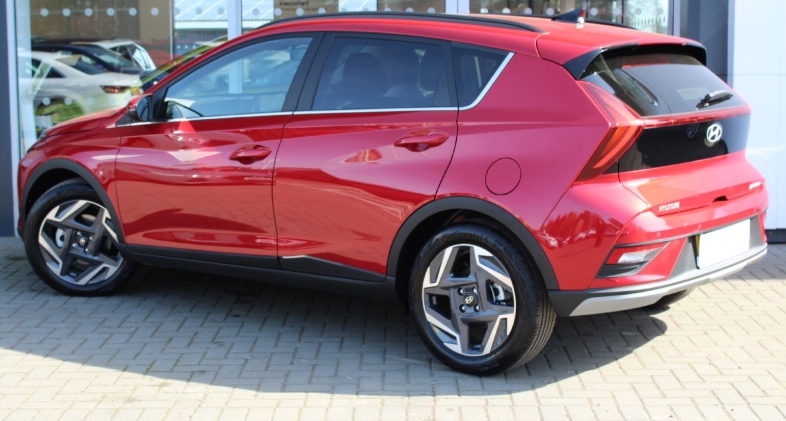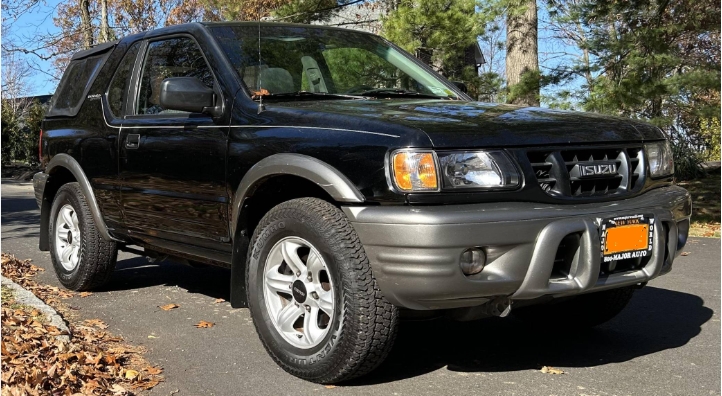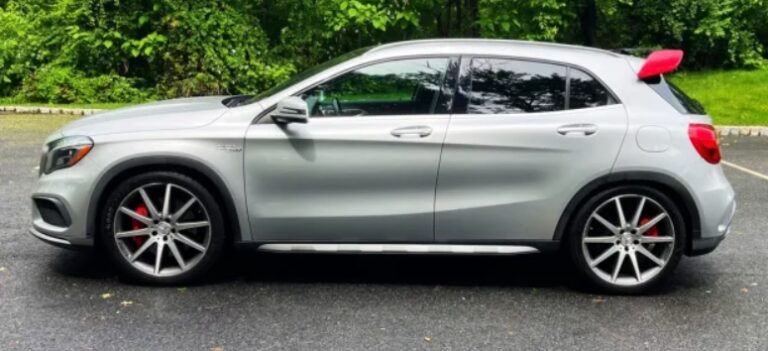The Urban Explorer Blueprint: Charting the Swift Evolution of The Hyundai Bayon
In the hyper-competitive theatre of the modern automotive market, few segments are as fiercely contested as the B-segment SUV, or compact crossover. It is a world of vibrant designs, clever packaging, and urban-friendly dimensions. Into this bustling arena, in March 2021, Hyundai launched a calculated and stylish contender: the Bayon. Named after the picturesque city of Bayonne in the southwest of France, the name itself was a clear signal of intent. This was a vehicle designed, developed, and targeted specifically for the European market.
Unlike legendary models with decades of history, the Hyundai Bayon’s story is not one of long, generational shifts. Instead, its evolution is a compressed, rapid-fire demonstration of Hyundai’s modern strategy: identify a specific market niche, enter with a product that is bold in design and strong on value, and refine it swiftly to stay ahead of the curve. This is the story of how the Bayon carved its space between the i20 supermini and the slightly larger Kona SUV, evolving from a clever newcomer to a polished competitor in just a few short years.
Genesis: The Strategic Imperative (2021)
To understand the Bayon, one must first understand the landscape of Hyundai’s lineup prior to 2021. The brand had the excellent i20, a benchmark in the supermini class, and the popular Kona, a B-segment SUV that was steadily growing in size, ambition, and technological offerings, including fully electric variants. This created a subtle but significant gap: a space for a crossover that was mechanically and financially closer to the i20, offering the high-riding position and practicality of an SUV without the cost or complexity of all-wheel-drive or electric powertrains.
The Bayon was the answer. Built on the same Hyundai-Kia K2 platform as the third-generation i20, it shared its wheelbase (2,580 mm) and much of its sophisticated interior architecture. However, it was taller, longer, and crucially, offered significantly more luggage space—411 litres compared to the i20’s 352 litres, a figure that bested many key rivals.
The design, guided by Hyundai’s “Sensuous Sportiness” philosophy, was deliberately distinctive. The 2021 launch model established a visual signature that was impossible to ignore:
A Striking Front Fascia: A wide, expansive grille sat below a thin air intake band. The lighting was a three-tiered affair, with narrow, arrow-like LED Daytime Running Lights (DRLs) at the top, the main headlamp clusters positioned lower down, and fog lamps at the base.
A Dynamic Profile: A strong, wedge-shaped shoulder line created a sense of forward motion, while an arrow-shaped C-pillar provided a unique “floating roof” illusion, especially with the optional two-tone paint schemes.
An Unmistakable Rear: The rear was perhaps its most talked-about feature. Arrow-shaped LED taillights were pushed far to the vehicle’s edges and connected by a thin horizontal red line, emphasizing the car’s width and creating a thoroughly modern aesthetic.
The Bayon wasn’t just a raised i20; it was a strategically positioned product designed to capture young individuals and small families who prioritized style, technology, and urban practicality above all else.
The Inaugural Lineup: Models and Trims (2021 – 2023)
Upon its launch, the Bayon was offered with a focused range of efficient petrol powertrains, eschewing diesel and full-hybrid options to maintain an accessible price point.
Powertrains:
1.2-litre MPi (Multi-Point Injection): This naturally-aspirated four-cylinder engine served as the entry point to the range. Producing 84 PS and paired exclusively with a 5-speed manual transmission, it was designed for cost-conscious buyers whose driving was predominantly within city limits.
1.0-litre T-GDi (Turbocharged Gasoline Direct Injection): This was the core engine of the Bayon lineup, a three-cylinder unit available in two states of tune and often incorporating Hyundai’s 48-volt mild-hybrid (MHEV) technology.
100 PS Version: This balanced performance and economy, making it the most popular choice. It could be paired with either a 6-speed intelligent Manual Transmission (iMT) or a 7-speed Dual-Clutch Transmission (DCT). The iMT featured a clever clutch-by-wire system that could decouple the engine from the transmission during coasting to save fuel.
120 PS Version: This range-topping engine offered a more spirited drive and was typically available on higher trim levels, exclusively paired with the 48V MHEV system and either the iMT or 7-speed DCT.
The 48V mild-hybrid system was a key technological feature. It used a small lithium-ion battery and a Mild-Hybrid Starter Generator (MHSG) to provide a small electric boost during acceleration, reducing the load on the petrol engine. It also enabled a smoother, quicker operation of the engine start-stop system and extended “sailing” or coasting periods.
Trim Levels (UK Market as an example):
Hyundai structured the Bayon’s trim levels to offer a clear progression of technology, comfort, and style.
SE Connect: The entry-level trim was far from spartan. It established a strong baseline of technology, featuring an 8-inch touchscreen infotainment system with wireless Apple CarPlay and Android Auto, a 10.25-inch digital driver’s instrument cluster, a rear-view camera, and a suite of ‘SmartSense’ safety features including Lane Keep Assist (LKA) and Forward Collision-Avoidance Assist (FCA). It typically rode on 16-inch alloy wheels.
Premium: This mid-spec trim represented the sweet spot for many buyers. It upgraded the central infotainment screen to a larger 10.25-inch unit with integrated navigation, added automatic climate control, heated front seats and a heated steering wheel, ambient interior lighting, and larger 17-inch alloy wheels. It also introduced privacy glass and front parking sensors.
Ultimate: As the name suggests, this was the top-tier, fully-loaded model. It built upon the Premium trim by adding a premium Bose audio system, a smart key with keyless entry and push-button start, and expanded safety features like Blind-Spot Collision-Avoidance Assist (BCA) and Lane Following Assist (LFA). The Ultimate trim often came standard with a two-tone roof for maximum stylistic impact.
N Line: Launched shortly after the initial models, the N Line trim injected a dose of motorsport-inspired flair. Crucially, this was a styling and handling package, not a performance upgrade, available with the 1.0 T-GDi engines. Its exclusive features included:
Exterior: A bespoke front bumper with a larger air intake, an N Line-specific grille, a sporty rear bumper with a chrome twin-exhaust outlet, and unique 17-inch alloy wheels.
Interior: N-branded sport seats with red contrast stitching, an N-branded leather steering wheel and gear knob, and red accents throughout the cabin. Some models also featured a slightly retuned suspension for a firmer, more engaging ride.
The First Refresh: Refinement and Technology (2024 – Present)
In early 2024, Hyundai unveiled a mid-life facelift for the Bayon. This update wasn’t a radical reinvention but a significant refinement, aligning the crossover’s styling with Hyundai’s latest design language and bolstering its technological offerings to keep it competitive.
Exterior Evolution:
The most dramatic change occurred at the front. The 2024 Bayon adopted the brand’s signature “Seamless Horizon” LED lamp. This slim, full-width light bar, first seen on models like the Staria and new Kona, replaced the previous high-mounted DRLs, creating a cleaner, more futuristic and imposing look. The main headlamps remained in their lower position, but the grille and front bumper were completely redesigned with a more assertive, angular pattern. The rear saw more subtle changes, with a reworked bumper design. The distinctive arrow-shaped taillights remained, preserving one of the Bayon’s key design cues. The refresh also introduced new 16- and 17-inch alloy wheel designs and a range of new paint colours, including Lumen Grey Pearl and Meta Blue Pearl.
Interior and Technological Upgrades:
Inside, the well-regarded layout remained, but the technology was enhanced.
Standardized Tech: The 10.25-inch digital instrument cluster became more widely available across the range, often as standard fitment.
Connectivity: The infotainment system was updated to support Over-The-Air (OTA) map updates, ensuring the navigation system remains current without requiring a visit to a dealership.
Convenience and Safety: The interior lighting was upgraded to energy-efficient LED technology. More USB-C ports were added for modern device charging, and the eCall emergency response system was updated to the second-generation 4G-based network for faster, more reliable communication.
The trim structure was also slightly revised in some markets to reflect the new standard equipment. For example, in the UK, the 2024 lineup was simplified to Advance, Premium, and Ultimate, with the sporty N Line variant continuing its popular run. The powertrain options were consolidated, with a primary focus on the efficient 1.0-litre T-GDi engines with 48V mild-hybrid technology, streamlining the range for the majority of buyers.
.
RepairSurge Online Repair Manuals Replace Bulky Books With Reliable Digital Information. Faster And Cheaper Than Traditional Printed Manuals, Users Get Instant Access To The Repair Information They Need For Any Car, Truck, Van or SUV:
.
Conclusion: A Blueprint for Success
The Hyundai Bayon’s evolution, though spanning only a few years, is a compelling case study in modern automotive strategy. It entered the market not with a bang, but with a precise, well-aimed shot, filling a niche Hyundai had astutely identified. Its initial success was built on a foundation of daring design, class-leading practicality, and a generous helping of standard technology.
The 2024 facelift demonstrated Hyundai’s agility. Rather than resting on its laurels, the brand proactively refined the Bayon, sharpening its looks with the striking Seamless Horizon lamp and future-proofing its cabin with the latest connectivity features. The evolution has cemented the Bayon’s identity: it is the unapologetically stylish, technologically savvy, and eminently practical urban explorer in Hyundai’s formidable SUV lineup. In a segment defined by rapid change, the Bayon’s own swift evolution proves it is not just a participant, but a blueprint for how to compete and thrive.







